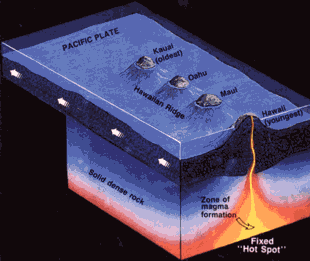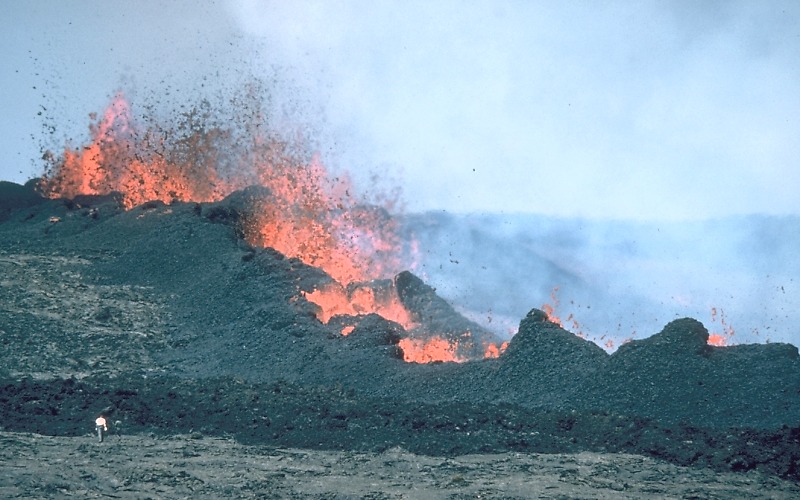|
Mauna Loa By Julie Wallan |
|
Location and Tectonic Setting
Mauna Loa erupting
Mauna Loa is a shield volcano located along the Hawaiian Emperor Chain in the Pacific Ocean. It is the largest volcano on planet Earth; about 74,000 cubic kilometers in all. Moku`aweoweo, Mauna Loa's 3x5 kilometer caldera, rises about 3,850 meters above sea level.
It is thought that a "hot spot" in the mantle has been feeding the chain of islands made as the Pacific plate shifts in a northwest direction. Therefore, Mauna Loa shares the properties of island arc volcanoes, and has mainly effusive eruptions, producing large amounts of basaltic lava in most cases.
Hot spot mechanism forming the Hawaiian Emperor Chain.
Recent studies have shown a slight deviation in Mauna Loa's usual tholeiitic lava, that some scientists have believed to be a sign that the island is shifting phases in moving away from the hot spot source of magma. The alkalic lava discovered at two young vents would be a good indicator that Mauna Loa has moved in to a post-shield phase, and is on its path of declining activity. However, although Mauna Loa is moving slowly away from its hot spot like all Hawaiian volcanoes have before it, the change in lava from tholeiitic to alkalic does not demonstrate the significant switch to a post-shield stage. The discovery made in 2005 of the alkalic lava instead led scientists to determine that Mauna Loa has been producing tholeiitic lavas because it has not experienced a significant decline in frequency of eruptions and the alkalic lava has not originated at the primary vent. These scientists believe that perhaps because the alkalic lava is only erupted at radial vents, the magma beneath the surface is going past the main conduit.
Lava fountains erupting from vents during the eruption of 1984.
|


